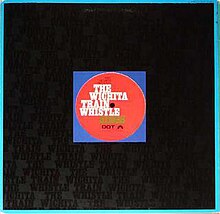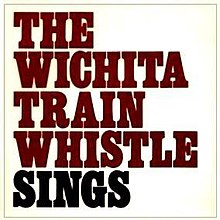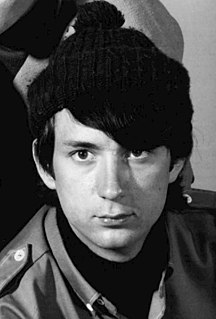
Robert Michael Nesmith was an American musician, songwriter, actor, producer, and novelist. He was best known as a member of the pop rock band the Monkees and co-star of the TV series The Monkees (1966–1968). His songwriting credits include "Different Drum", which became a hit for Linda Ronstadt and the Stone Poneys.

The Monkees were a rock and pop band, formed in Los Angeles in 1966, whose line-up consisted of the American actor/musicians Micky Dolenz, Michael Nesmith and Peter Tork alongside English actor/singer Davy Jones. The group was conceived in 1965 by television producers Bob Rafelson and Bert Schneider for the situation comedy series of the same name. Music credited to the band was released on LP, as well as being included in the show, which aired from 1966 to 1968.

The Wrecking Crew was a loose collective of Los Angeles-based session musicians whose services were employed for a great number of studio recordings in the 1960s and 1970s, including hundreds of Top 40 hits. The musicians were not publicly recognized in their era, but were viewed with reverence by industry insiders. They are now considered one of the most successful and prolific session recording units in music history.

Pisces, Aquarius, Capricorn & Jones Ltd. is the fourth album by the Monkees. It was released on November 6, 1967, when the Monkees were exerting more control over their music and had started to play many of the instruments themselves, something that their record company had previously forbidden. However, though the group had full control over the album, they invited more contributions from outside songwriters than on their previous album, Headquarters, and used session musicians to complement their sound. The album also featured some of the earliest uses of the Moog synthesizer in popular music. Pisces, Aquarius, Capricorn & Jones Ltd. sold more than three million copies and was also the band's fourth consecutive album to reach number one on the U.S. Billboard 200.
Thomas J. Tedesco was an American guitarist and studio musician in Los Angeles and Hollywood. He was part of the loose collective of the area's leading session musicians later popularly known as The Wrecking Crew, who played on thousands of studio recordings in the 1960s and 1970s, including several hundred Top 40 hits.

Headquarters is the third album issued by the Monkees and the first with substantial songwriting and instrumental performances by members of the group itself, rather than by session musicians and professional songwriters. After a struggle for creative autonomy with their record label, the group had been allowed, to a degree, to record by themselves. Headquarters reached No. 1 on the Billboard 200 chart and was certified double platinum in the United States with sales of more than two million copies within the first two months of release. It peaked at No. 2 on the UK charts. It is included in the 2006 book 1001 Albums You Must Hear Before You Die.

The Monkees Present is the Monkees' eighth album. It is the second Monkees album released after the departure of Peter Tork and the last to feature Michael Nesmith until 1996's Justus.

Changes is the ninth studio album by the Monkees. The album was issued after Michael Nesmith's exit from the band, leaving only Micky Dolenz and Davy Jones to fulfill the recording contract they had signed in the mid-1960s. Changes was their last new album for Colgems Records and the group's last album of all new material until Pool It!, released in 1987.

Head is the soundtrack to the film Head, the only theatrical release by the Monkees. Released in 1968 through Colgems, it was the band's sixth album. Head was the last Monkees album to feature vocal contributions by Peter Tork until Pool It! in 1987 and the last to feature all four Monkees until 1996's Justus.

Instant Replay is the seventh studio album by the Monkees. Issued 11 months after the cancellation of the group's NBC television series, it is also the first album released after Peter Tork left the group and the only album of the original nine studio albums that does not include any songs featured in the TV show.

Pretty Much Your Standard Ranch Stash is American singer-songwriter Michael Nesmith's sixth album of his post-Monkees career. Released in September 1973, it was his final album for RCA Records and did not chart.
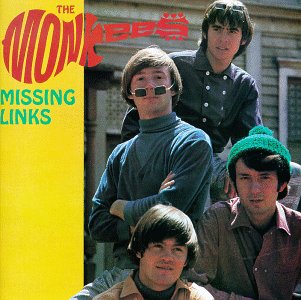
Missing Links is a compilation album of rare and previously unreleased songs by the Monkees, issued by Rhino Records in 1987. It is the first volume of a three-volume set, followed by Missing Links Volume Two in 1990 and Missing Links Volume Three in 1996.

Missing Links Volume Three is a compilation album of rare and previously unreleased songs by The Monkees, issued by Rhino Records in 1996. It is the third and final volume of a three-volume set, preceded by Missing Links in 1987 and Missing Links Volume Two in 1990.

Missing Links Volume Two is a compilation album of rare and previously unreleased songs by the Monkees, issued by Rhino Records in 1990. It is the second volume of a three-volume set, preceded by Missing Links in 1987 and followed by Missing Links Volume Three in 1996.
Orville J. Rhodes, better known as Red Rhodes or O. J. Rhodes, was an American pedal steel guitarist. His mother taught him to play the Dobro at the age of five, but at the age of fifteen he switched to the steel guitar. He was a boxer and an oil company engineer before he settled into music. He moved to Los Angeles in 1960 and became a session musician.
Hank Cicalo is an American recording engineer whose career has spanned over fifty years. Among the artists recorded by Cicalo are The Monkees, Carole King, Barbra Streisand, and George Harrison.
The First National Band or Michael Nesmith and The First National Band was a short-lived American collaborative band, led by Monkee Michael Nesmith. During the two active years, The First National Band released three albums in the country rock genre in 1970 and 1971.
"Mary, Mary" is a song written by Michael Nesmith and first recorded by the Paul Butterfield Blues Band for their 1966 album, East-West. Nesmith's band, the Monkees, later recorded it for More of the Monkees (1967). Hip hop group, Run–D.M.C., revived the song in the late 1980s, with an adaptation that appeared in the U.S. record charts.
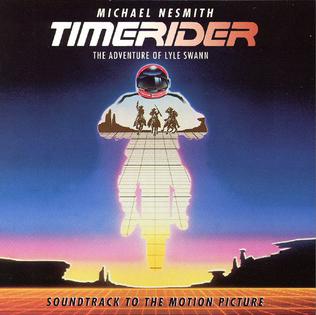
The soundtrack for Timerider: The Adventure of Lyle Swann was written and recorded by Michael Nesmith for the movie by the same name.

Good Times! is the twelfth studio album by American pop rock band the Monkees. Produced mainly by Adam Schlesinger, the album was recorded to commemorate the band's 50th anniversary. It is the first Monkees studio album since Justus (1996), marking the longest gap between Monkees albums to date, and the first since the death of founding member Davy Jones. The album features surviving Monkees Micky Dolenz, Michael Nesmith, and Peter Tork, as well as a posthumous contribution from Jones. The album received generally positive reviews from music critics and reached number 14 on the Billboard 200, becoming the band's highest-charting album in 48 years.
